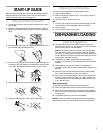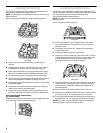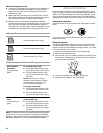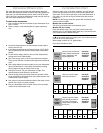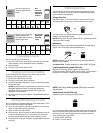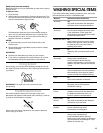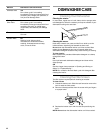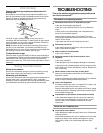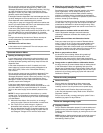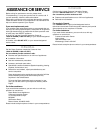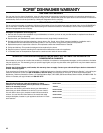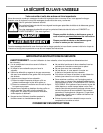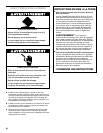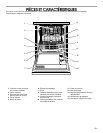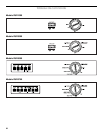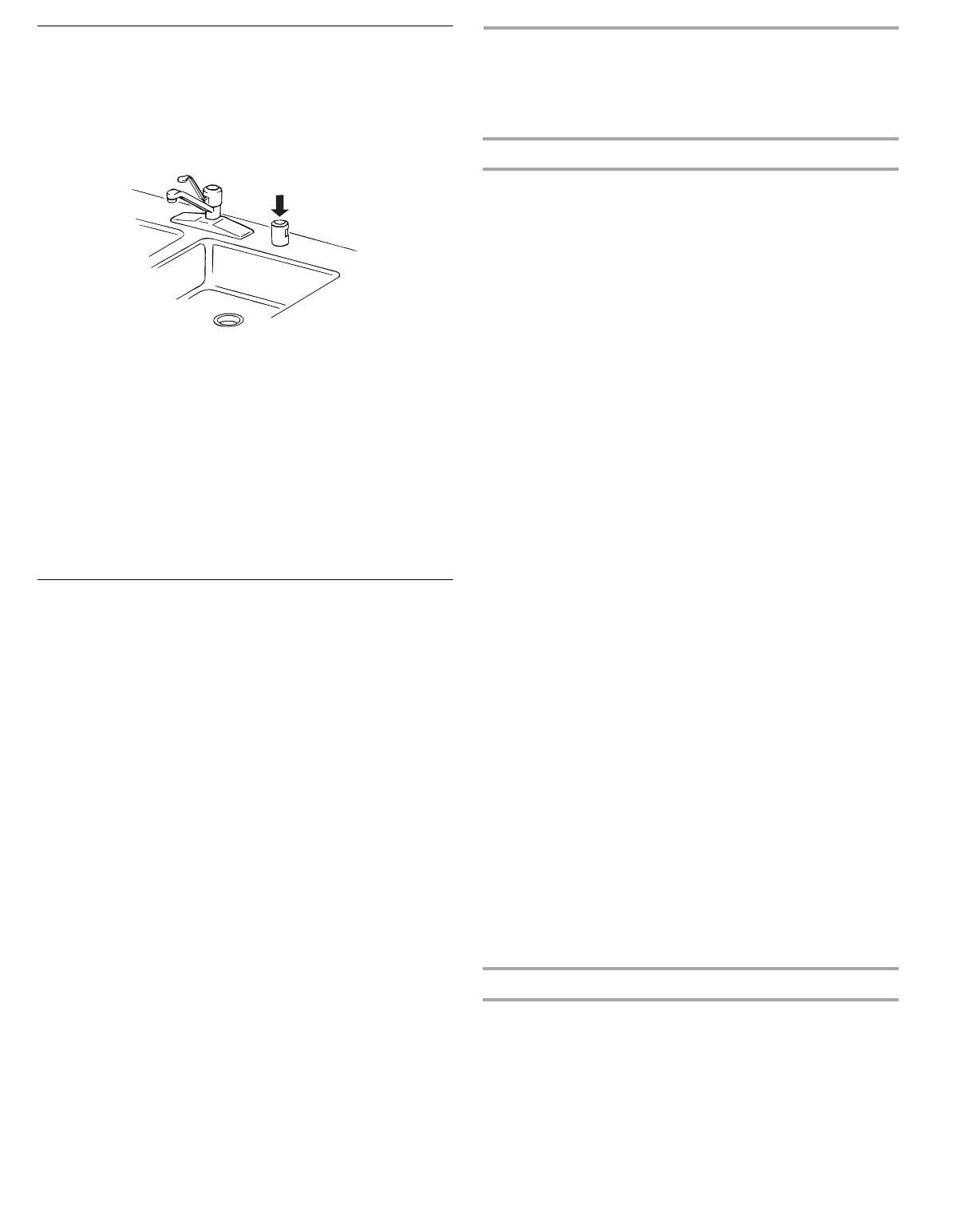
15
Drain Air Gap
Check the drain air gap anytime your dishwasher isn’t
draining well.
Some state or local plumbing codes require the addition of a
drain air gap between a built-in dishwasher and the home drain
system. If a drain is clogged, the drain air gap protects your
dishwasher from water backing up into it.
The drain air gap is usually located on top of the sink or
countertop near the dishwasher. To order a drain air gap contact
your local dealer, or in the U.S.A., call the Customer Interaction
Center and ask for Part Number 300096.
NOTE:
The drain air gap is an external plumbing device that is
not part of your dishwasher. The warranty provided with your
dishwasher does not cover service costs directly associated with
the cleaning or repair of the external drain air gap.
To clean the drain air gap
Clean the drain air gap periodically to ensure proper drainage of
your dishwasher. Follow the cleaning instructions provided by the
manufacturer. With most types, you lift off the chrome cover.
Unscrew the plastic cap. Then check for any soil buildup. Clean if
necessary.
Storing Your Dishwasher
Storing for the summer
Protect your dishwasher during the summer months by turning
off the water supply and power supply to the dishwasher.
Winterizing your dishwasher
Protect your dishwasher and home against water damage due to
freezing water lines. If your dishwasher is left in a seasonal
dwelling or could be exposed to near freezing temperatures, have
your dishwasher winterized by authorized service personnel.
TROUBLESHOOTING
First try the solutions suggested here and possibly avoid
the cost of a service call...
Dishwasher is not operating properly
■
Dishwasher does not run or stops during a cycle
Is the door closed tightly and latched?
Is the right cycle selected? Refer to the “Cycle Selection
Chart.”
Is there power to the dishwasher? Has a household fuse
blown or circuit breaker tripped?
Has the motor stopped due to an overload? The motor
automatically resets itself within a few minutes. If it does not
restart, call for service.
Is the water shut-off valve (if installed) turned on?
■
Dishwasher will not fill
Is the overfill protection float able to move up and down
freely? Press down to release.
■
Water remains in the dishwasher
Is the cycle complete?
■
Detergent remains in the covered section of the
dispenser
Is the cycle complete?
Is the detergent lump-free? Replace detergent if necessary.
Is the bottom rack installed properly with the bumpers in the
front? Refer to the “Parts and Features” section. Reinstall the
rack if necessary.
■
White residue on the front of the access panel
Was too much detergent used? Refer to the “Detergent
Dispenser” section.
Is the brand of detergent making excess foam? Try a different
brand to reduce foaming and eliminate buildup.
■
Odor in the dishwasher
Are dishes washed only every 2 or 3 days? Run a rinse cycle
once or twice a day until you have a full load.
Does the dishwasher have a new plastic smell? Run a vinegar
rinse as described in “Spotting and filming on dishes” later in
this Troubleshooting guide.
■
Condensation on the kitchen counter (built-in models)
Is the dishwasher aligned with the counter top? Moisture
from the vent in the dishwasher console can form on the
counter. Refer to the Installation Instructions for more
information.
Dishes are not completely clean
■
Food soil left on the dishes
Is the dishwasher loaded correctly? Refer to the “Dishwasher
Loading” section.
Is the water temperature too low? If needed, turn home water
heater up to ensure water entering dishwasher is at least
120°F (49°C). Refer to the “Dishwasher Efficiency Tips”
section.



